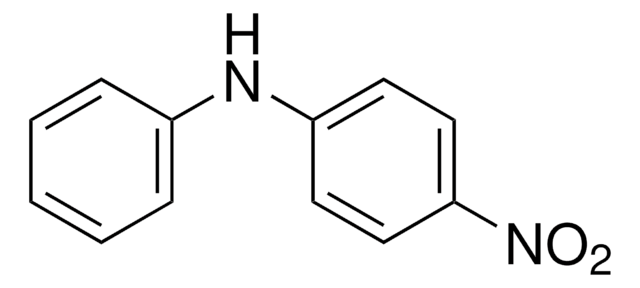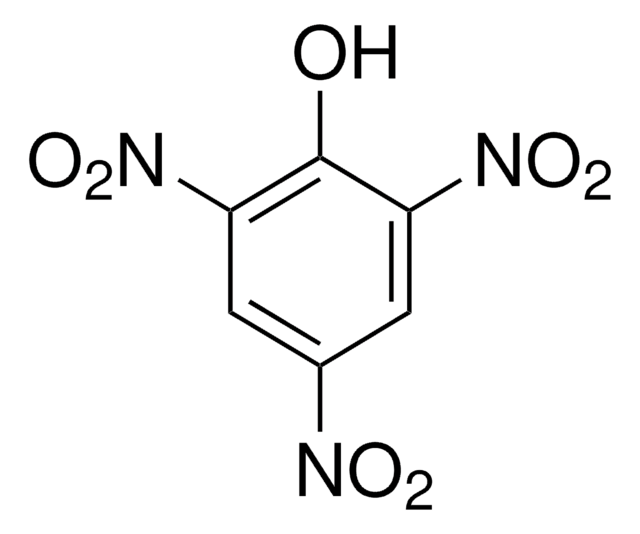ERT-107S
2,4,6-Trinitrotoluene solution
10 mg/mL in acetonitrile, ampule of 5 mL, certified reference material, Cerilliant®
Sinonimo/i:
TNT
About This Item
Prodotti consigliati
Grado
certified reference material
Livello qualitativo
Caratteristiche
Snap-N-Spike®/Snap-N-Shoot®
Confezionamento
ampule of 5 mL
Produttore/marchio commerciale
Cerilliant®
Concentrazione
10 mg/mL in acetonitrile
applicazioni
environmental
Formato
single component solution
Temperatura di conservazione
−20°C
Stringa SMILE
CC1=C([N+]([O-])=O)C=C([N+]([O-])=O)C=C1[N+]([O-])=O
InChI
1S/C7H5N3O6/c1-4-6(9(13)14)2-5(8(11)12)3-7(4)10(15)16/h2-3H,1H3
SPSSULHKWOKEEL-UHFFFAOYSA-N
Cerchi prodotti simili? Visita Guida al confronto tra prodotti
Descrizione generale
Applicazioni
Note legali
Avvertenze
Danger
Indicazioni di pericolo
Classi di pericolo
Acute Tox. 4 Dermal - Acute Tox. 4 Inhalation - Acute Tox. 4 Oral - Eye Irrit. 2 - Flam. Liq. 2
Codice della classe di stoccaggio
3 - Flammable liquids
Classe di pericolosità dell'acqua (WGK)
WGK 2
Punto d’infiammabilità (°F)
35.6 °F - closed cup
Punto d’infiammabilità (°C)
2 °C - closed cup
Certificati d'analisi (COA)
Cerca il Certificati d'analisi (COA) digitando il numero di lotto/batch corrispondente. I numeri di lotto o di batch sono stampati sull'etichetta dei prodotti dopo la parola ‘Lotto’ o ‘Batch’.
Possiedi già questo prodotto?
I documenti relativi ai prodotti acquistati recentemente sono disponibili nell’Archivio dei documenti.
Il team dei nostri ricercatori vanta grande esperienza in tutte le aree della ricerca quali Life Science, scienza dei materiali, sintesi chimica, cromatografia, discipline analitiche, ecc..
Contatta l'Assistenza Tecnica.









